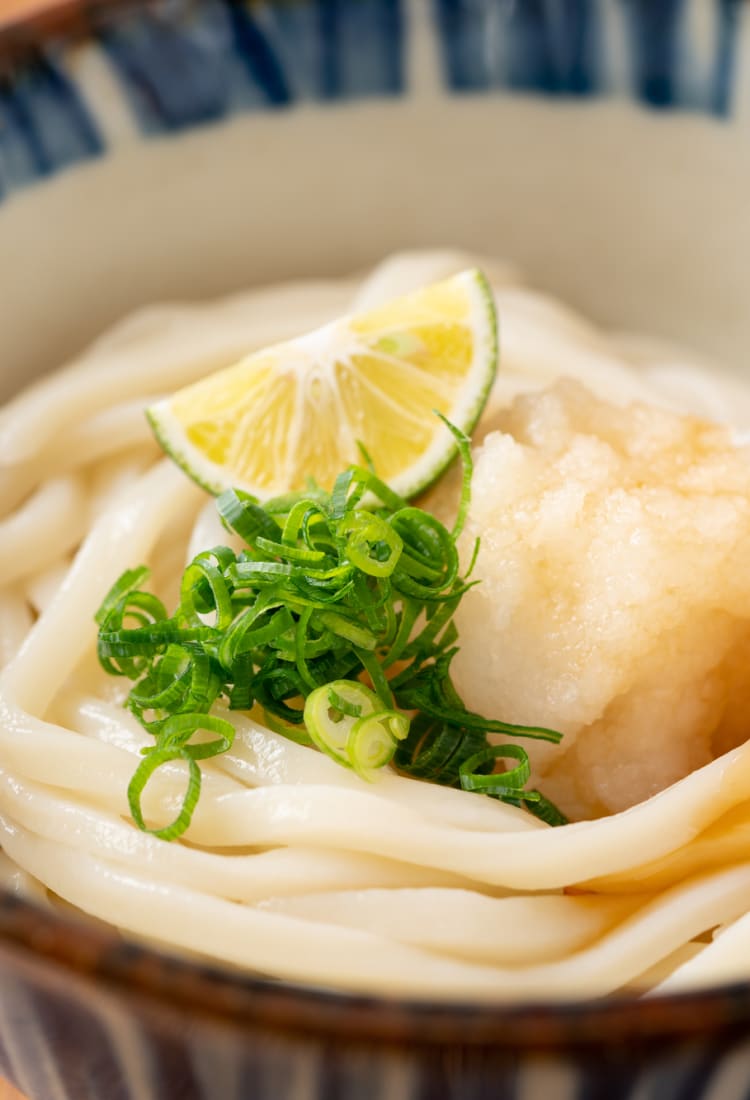
2022.01 From Tokushima Ramen to Sanuki Udon: Deep Inside Shikoku’s Noodle-based Cuisine Noodles for longevity, noodles for life
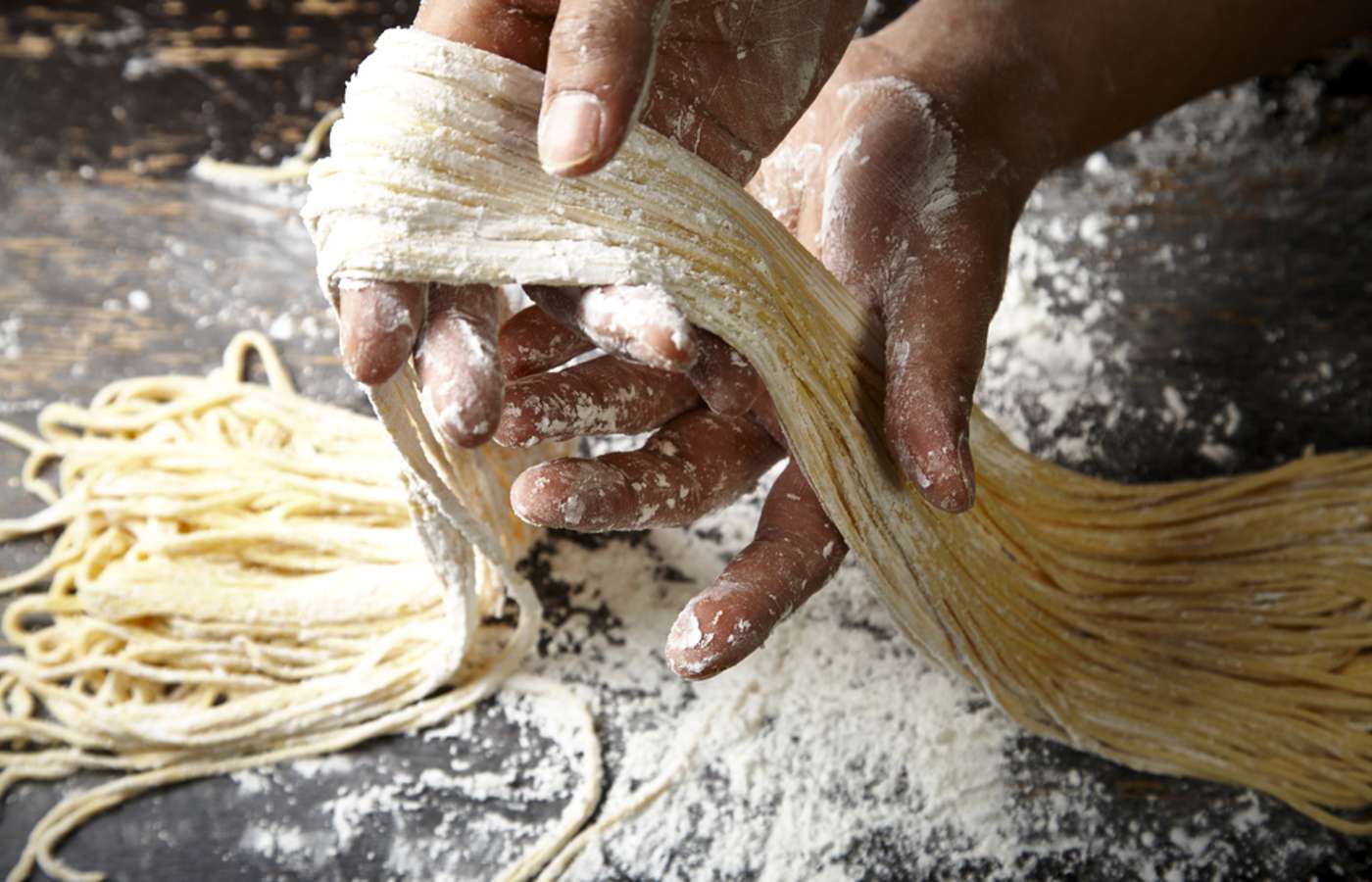
Japan’s southern island of Shikoku represents a magical microcosm of Japanese cuisine, including a number of popular regional noodle dishes made from raw ingredients including flour, buckwheat, eggs and more. Let’s take an engaging look at the noodle dishes of Shikoku, including Sanuki Udon from Kagawa, Tokushima Ramen from Tokushima, Kochi Prefecture’s nabe-yaki ramen and last but not least, Yawatahama Champon from Ehime.
Sanuki Udon: Kagawa Prefecture’s bouncy, brilliant noodles
Kagawa Prefecture is nearly synonymous with Sanuki Udon noodles, named after the ancient title for the prefecture, the Kingdom of Sanuki. The fresh wheat noodles are characterized by a square shape with flat edges and a very al dente, chewy taste that locals love. There are over 700 Sanuki Udon restaurants in Kagawa alone!

Sanuki Udon is generally served in a pared-down style with a dipping sauce made from niboshi (dried sardines) with citrus accents and egg yolk or other simple yet flavorful ingredients.
The brilliant, bouncy noodles from Kagawa have expanded into a famous brand name, with “Sanuki” emblazoned on udon shops offering the unique style throughout Japan.
Kagawa is also home to the tantalizing “hone-tsuki-dori,” seasoned bone-in chicken thighs that are absolutely delicious. Also, the island of Shodoshima in the Seto Inland Sea is part of Kagawa, and the olive plantations here were the first to successfully grow the plant in Japan.

Come to Kagawa for a bowl of famous Sanuki Udon and stay to explore everything the prefecture has to offer!
Tokushima Ramen: Deep, rich and satisfying
Ramen is a bonafide culinary staple worldwide, from cheap satisfying instant meals to gourmet establishments in Japan and other countries. There’s a popular local take on ramen in Tokushima Prefecture, in eastern Shikoku, that is tantalizing and undeniably delicious.
Tokushima Ramen features a rich, enchanting soup topped with tender sweet and spicy pork belly. This is ramen for serious fans of the craft—those seeking a bowl with some serious punch. It comes in a darker version, flavored with dark soy or tamari soy sauce, a white type that utilizes famous "tonkotsu" (pork marrow) soup, and a more mild yellow type that’s flavored with chicken and vegetable stock. However, all three styles are pork-based, thick and satisfying. Traditionally it’s served with a raw egg, which poaches slightly in the hot broth, creating another layer of depth and flavor.

Photo credit: Tokushima Awa Navi
Tokushima Ramen restaurants can be found all over the prefecture, allowing visitors to compare tastes from shop to shop. Also, Tokushima is an agricultural powerhouse within Shikoku, and the most famous products include Naruto sweet potatoes, the citrus fruit sudachi, lotus root and strawberries. Alongside the famous Iya Valley, one of Japan’s most mystical and enchanting destinations with ancient history, Tokushima Prefecture offers a wealth of attractions for visitors that engage all the senses.

Vine bridges in Iya Valley, Tokushima give the entire area an aura of mystique
Kochi nabe-yaki ramen: A local take on the world-famous dish
Ramen is endlessly popular throughout Japan, and has earned a spot on our list for Kochi Prefecture, too. In the southernmost part of Shikoku, facing the Pacific Ocean, Kochi’s nabe-yaki ramen has a chicken stock and soy-based broth prepared in a single-serving earthenware pot. This keeps the dish piping hot until the last slurp, and it comes topped with rustic ingredients including green onions, chikuwa fish cakes and a raw egg.
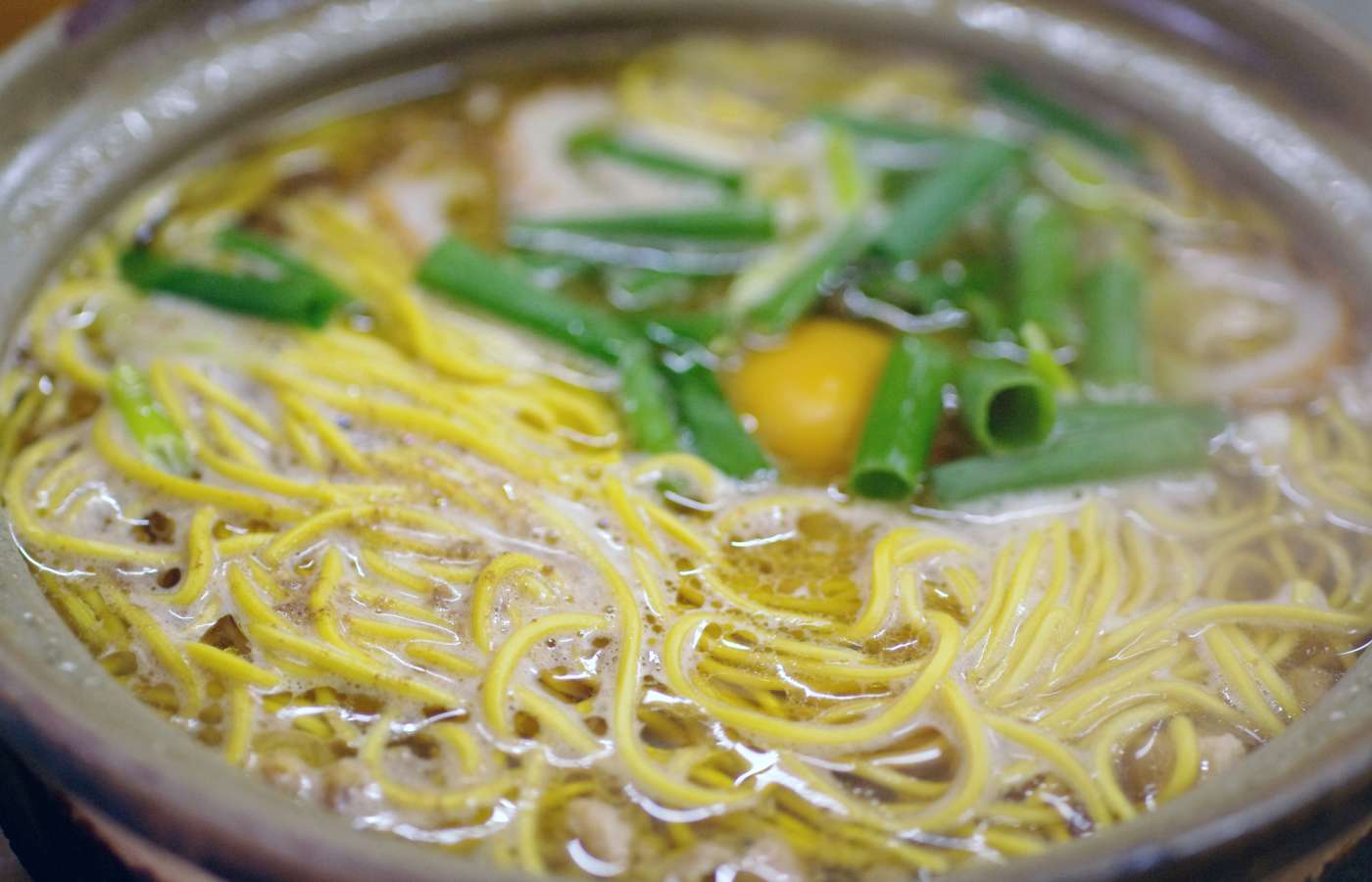
The earthenware pot keeps the soup very hot, so use caution, but breaking the egg results in a fantastic egg-drop soup flavor. Kochi nabe-yaki ramen is both a feast for the body and soul, especially on a cold seaside night.
Kochi Prefecture is also famous for seared bonito, a delectable fish in the mackerel and tuna family, traditionally served seared rare over a straw fire with raw ginger and garlic.
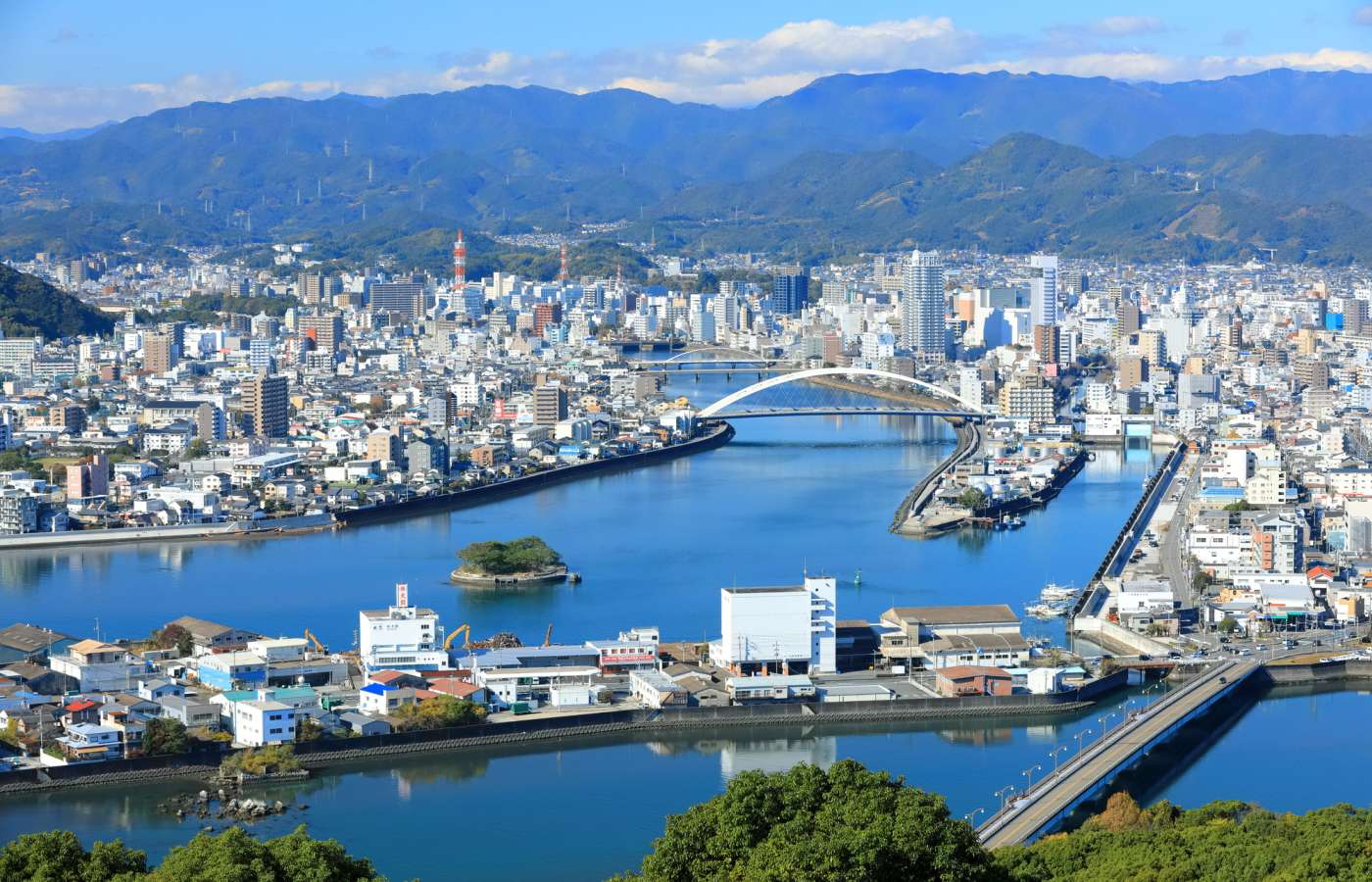
Kochi City is one of the top destinations along Shikoku’s southern Pacific Ocean coast.
Kochi’s location on the Pacific Ocean also makes it a surfers’paradise, and for history buffs, discovering the history of Sakamoto Ryoma, a samurai visionary inspired by the United States’ethos of“all men are created equal,”will shed new light on this southern paradise in Shikoku Prefecture.
Yawatahama Champon: A heavenly mix of ramen and stir fry
In Ehime Prefecture, the southern city of Yawatahama has its own take on Nagasaki Champon, a regional noodle dish from Nagasaki, Japan. Here, it’s called Yawatahama Champon, and the rich, golden soup using chicken, bonito and kombu (kelp) broth is filled with thick, straight egg noodles alongside stir-fried pork, shrimp, onions, bamboo shoots, carrots and more.
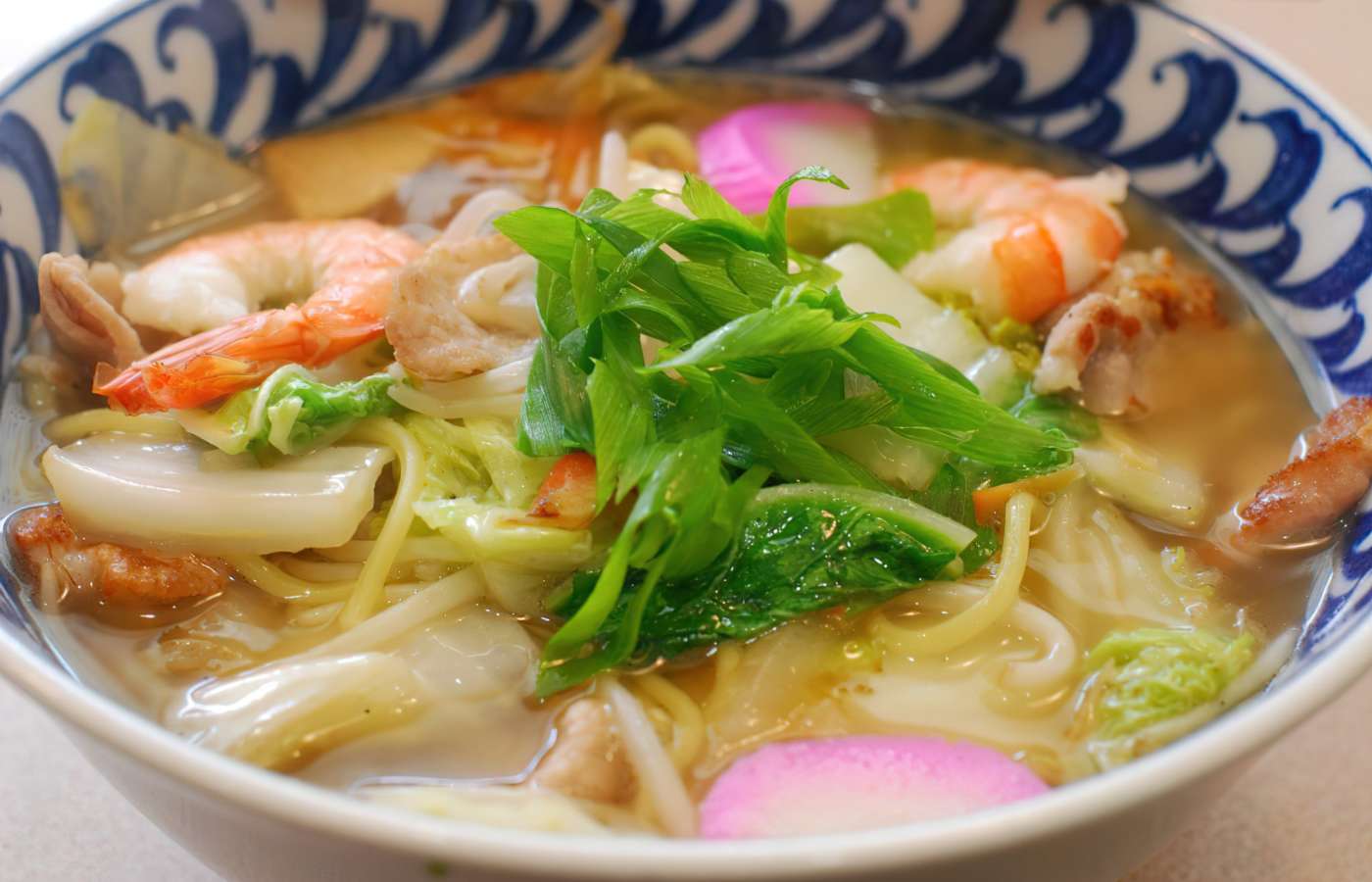
“Champon” means “mixed together” in Japanese, and this hearty, filling take on ramen is guaranteed to leave you satisfied.
Ehime is Japan’s top producer of mikan citrus fruits (mandarin oranges), and the Yawatahama area offers chances for visitors to hand-pick the sweet and juicy fruits. Other major attractions in Ehime include Mount Ishizuchi, one of Japan’s seven holy mountains that offers stunning views and a challenging hike for the adventurous traveler. Also, Ehime features many of the 88 temples along the Shikoku Pilgrimage, offering visitors a chance to understand a cultural phenomenon at the core of Japanese spirituality.

Shikoku’s traditional 88-temple pilgrimage can be complete in sections, and remains popular today.
Yawatahama Champon is the perfect delicious meal to refuel during a busy and exciting trip to Ehime Prefecture, an enchanting land of culinary and cultural rewards for any visitor to Japan.
Cooking for yourself: Noodle-making workshops and fun with DIY ramen
Given the popularity of different noodle dishes across Japan, there are many opportunities for visitors to try hand-kneading, pulling, cutting and boiling their own noodles for a memorable culinary and cultural experience. Kagawa Prefecture offers a number of different workshops for trying your hand at preparing Sanuki Udon, with ample information available online.

While soba and udon are perhaps more classical Japanese noodles, ramen remains extremely popular both in Japan and abroad. There are many cooking guides online for making tonkotsu broth from scratch using pork bones to create the unctuous, satisfying soup, and concocting handmade ramen noodles while considering the proper alkaline balance is now a refined art. On your next trip to Japan, consider looking deeper into the craft and acquiring knowledge, tools or ingredients to bring home and help perfect your homemade ramen culinary skills.
Business hours
Due to measures to prevent the spread of COVID-19, business hours may be subject to change; please check with the venues before visiting.




















































